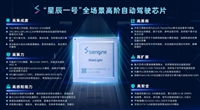| 型号 | 品牌 | 获取价格 | 描述 | 数据表 |
| RF2123 | ETC |
获取价格 |
HIGH PWOER AMPLIFIER |

|
| RF2123PCBA | ETC |
获取价格 |
HIGH PWOER AMPLIFIER |

|
| RF2125 | RFMD |
获取价格 |
HIGH POWER LINEAR AMPLIFIER |

|
| RF2125P | RFMD |
获取价格 |
HIGH POWER LINEAR AMPLIFIER |

|
| RF2125PCBA | RFMD |
获取价格 |
HIGH POWER LINEAR AMPLIFIER |

|
| RF2125PPCBA | RFMD |
获取价格 |
HIGH POWER LINEAR AMPLIFIER |

|
| RF2126 | RFMD |
获取价格 |
HIGH POWER LINEAR AMPLIFIER |

|
| RF2126_07 | RFMD |
获取价格 |
HIGH POWER LINEAR AMPLIFIER |

|
| RF2126PCBA | RFMD |
获取价格 |
HIGH POWER LINEAR AMPLIFIER |

|
| RF2126PCK | RFMD |
获取价格 |
HIGH POWER LINEAR AMPLIFIER |

|
 三星深化印度制造布局,供应链本地化进程加速
三星深化印度制造布局,供应链本地化进程加速

 芯擎科技“星辰一号”自动驾驶芯片点亮成功,2025年量产在即
芯擎科技“星辰一号”自动驾驶芯片点亮成功,2025年量产在即

 纳微科技震撼发布GaNSlim革新氮化镓功率芯片
纳微科技震撼发布GaNSlim革新氮化镓功率芯片

 意法半导体发布第四代SiC技术,助力电动汽车电驱
意法半导体发布第四代SiC技术,助力电动汽车电驱
